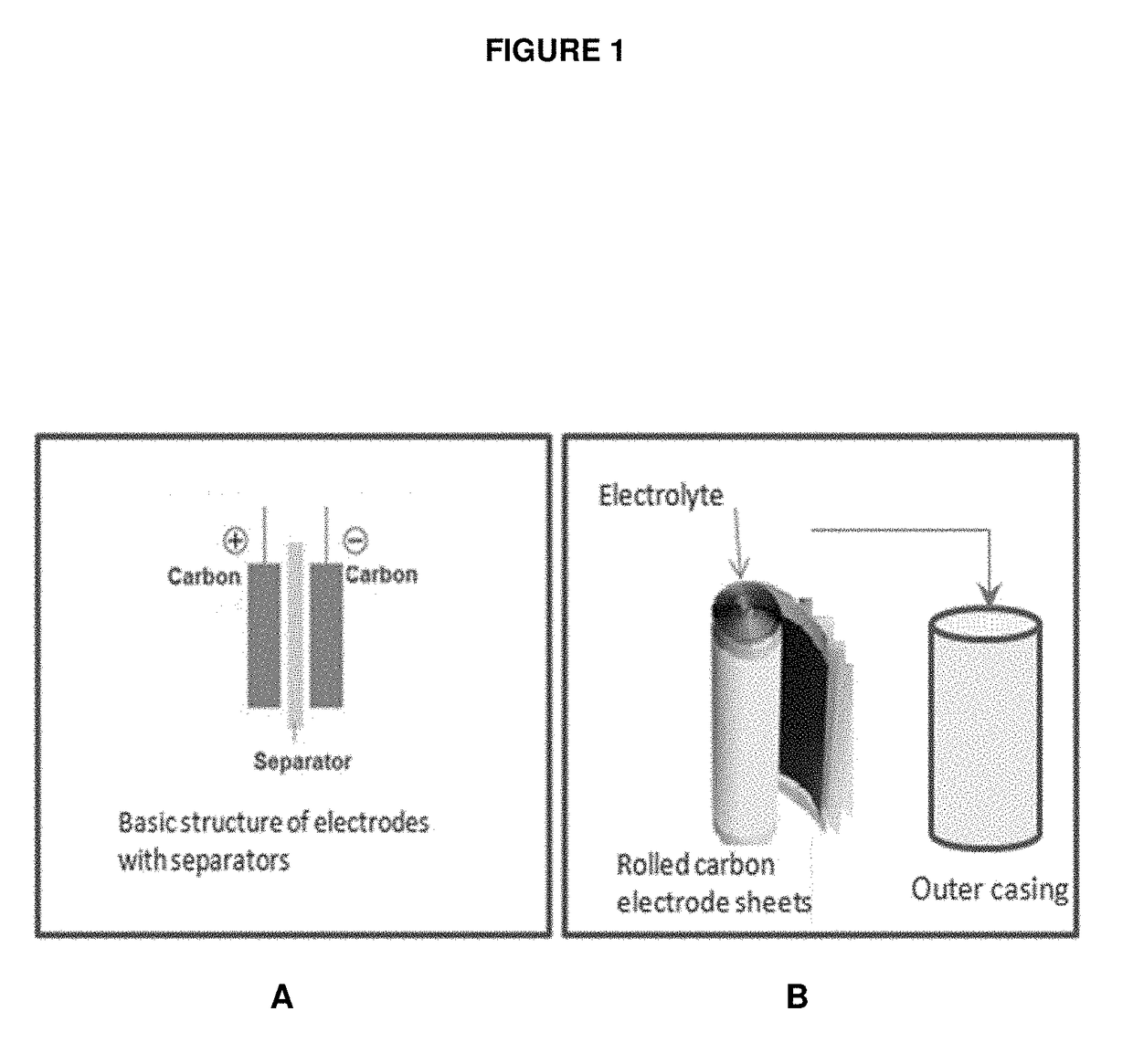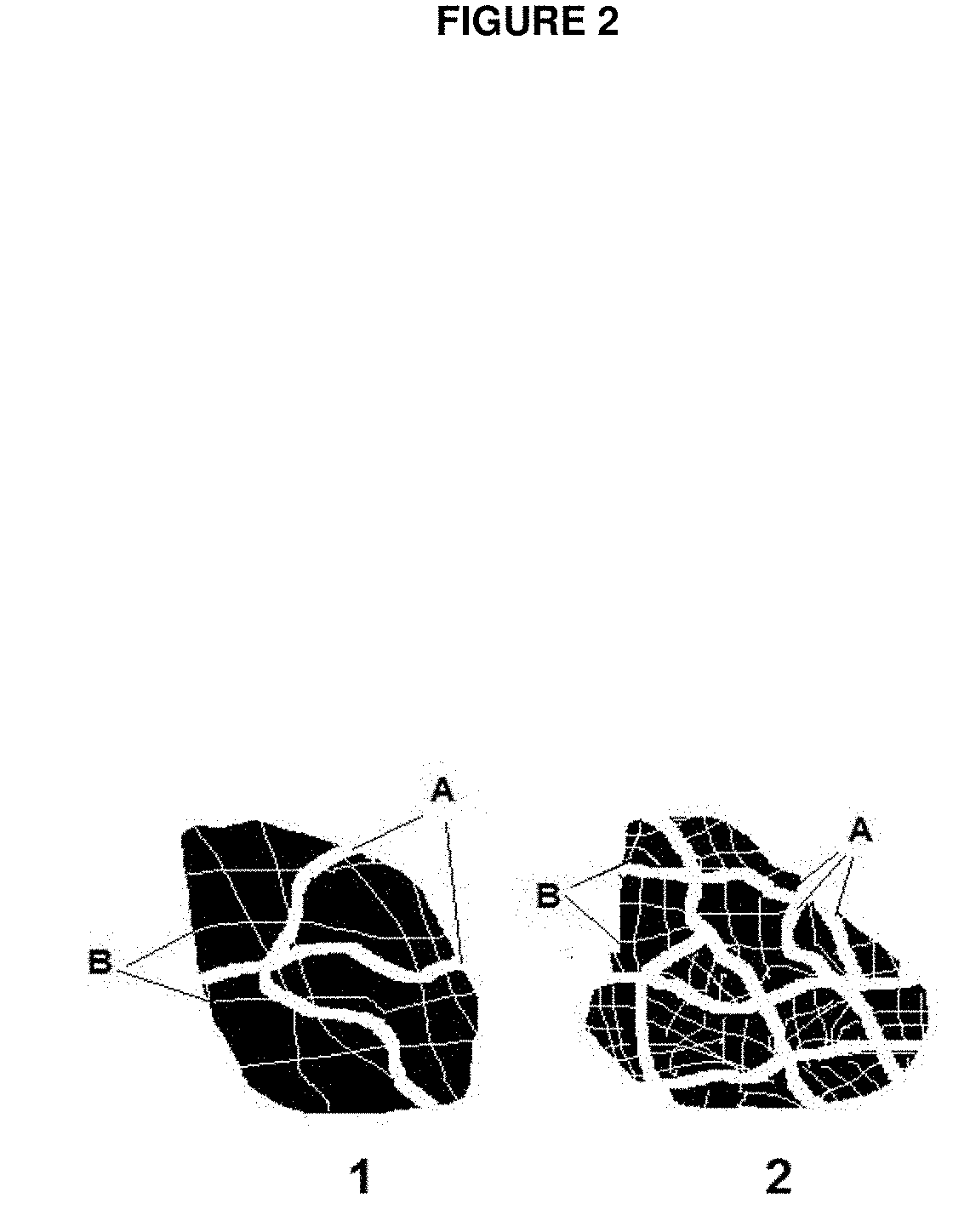Porous carbon electrodes for energy storage applications
a technology of porous carbon electrodes and energy storage applications, which is applied in the direction of carbon compounds, inorganic chemistry, chemistry apparatus and processes, etc., can solve the problems of curtailing widespread application and shortening energy-density capabilities, and achieve linear increase in capacitance, high surface area, and high surface area
- Summary
- Abstract
- Description
- Claims
- Application Information
AI Technical Summary
Benefits of technology
Problems solved by technology
Method used
Image
Examples
example 1
Polymerization of Furfuryl Alcohol Using Alumina
[0056]Formation of Porous Carbon Matrix. Three sizes of alumina or Al(OH)3 particles were used as catalyst templates for the polymerization of furfuryl alcohol. The amounts of alumina and furfuryl are given in Table I. In a one-liter beaker, the furfuryl alcohol (Sigma-Aldrich, St. Louis, Mo.) (See FIG. 14, A) was stirred using a magnetic stirrer while the Al(OH)3 powder was added slowly (FIG. 14, B). The stirring continued until the mixture was thick and no more powder could be added (FIG. 14, C). The mixture was then subjected to ultrasonic vibration to increase mixing, by lowering the beaker into a water bath and then ultrasonically vibrating for up to 30 minutes. The mixture was transferred to a 500-mL (16 oz.) glass jar. The mouth of the jar was covered with Teflon tape before the jar cap was screwed on. The mixture was allowed to stand at room temperature for about two days as the polymerization process started as signified by a ...
example 2
Polymerization of 2-Acetylfuran Using Dichlorodimethylsilane
[0060]In a one-liter beaker, 100 g of 2-acetylfuran (Sigma-Aldrich) was stirred for a few minutes using a magnetic stirrer. Catalyst dichlorodimethylsilane, Si(CH3)2Cl2 (25 mL) (Sigma-Aldrich), was added slowly. Stirring was continued for 5 minutes and the stir bar was then removed. The mixture was transferred to a 500-mL (16 oz.) glass jar. The mouth of the jar was covered with Teflon tape before the jar cap was screwed on. The jar was allowed to stand at room temperature for 190 hours. A black solid formed.
example 3
Polymerization of Furfuryl Alcohol Using Dichlorodimethylsilane
[0061]In a one-liter beaker, 150 mL of furfuryl alcohol (Sigma-Aldrich) along with 125 mL acetone (high purity, HPLC grade) was stirred for a few minutes using a magnetic stirrer. NaOH pellets (0.1 g) were then added to the mixture and dry ice was packed around the beaker to cool it down. Catalyst dichlorodimethylsilane, Si(CH3)2Cl2 (30 mL) (Sigma-Aldrich), was added slowly. Stirring was continued. A black solid formed.
[0062]The polymerized material was then heated to 600° C. over a period of one hour in a vacuum tube furnace (Model #GSL-1100, MTI Corporation, Richmond, California, US), for under a controlled nitrogen atmosphere. The furnace was maintained at 600° C. for one hour, then allowed to cool naturally to room temperature. The polymerized materials were loaded into quartz boats that were then placed in the center of the quartz tube. Gas lines were attached to one side of the tube using the vacuum fittings provid...
PUM
| Property | Measurement | Unit |
|---|---|---|
| temperature | aaaaa | aaaaa |
| temperature | aaaaa | aaaaa |
| size | aaaaa | aaaaa |
Abstract
Description
Claims
Application Information
 Login to View More
Login to View More - R&D
- Intellectual Property
- Life Sciences
- Materials
- Tech Scout
- Unparalleled Data Quality
- Higher Quality Content
- 60% Fewer Hallucinations
Browse by: Latest US Patents, China's latest patents, Technical Efficacy Thesaurus, Application Domain, Technology Topic, Popular Technical Reports.
© 2025 PatSnap. All rights reserved.Legal|Privacy policy|Modern Slavery Act Transparency Statement|Sitemap|About US| Contact US: help@patsnap.com



